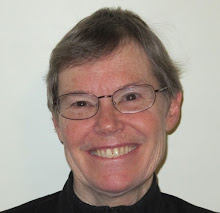I'm not old enough to remember the big wall-hung phones with cranks (except as seen on TV shows like Lassie), but I do recall black phones with dials.
For December's column, published today, I wrote about the telephones of my early years:
When phone numbers were short and the phone was out of reach
By Sandy Nichols Ward
As a child I was told not to touch the telephone. It was a strange and important piece of equipment that only adults could use. It was black and sat on a high shelf in the hall, higher than I could reach. Even as I grew and might have reached it, the phone was definitely off limits.
I recall that our number was 2224 with a letter at the end. The letters designated different ring patterns on a single party line. We were 2224R, perhaps, and my grandparents next door had 2224M. Or maybe they were R and we were M. Since I never used a phone in those days, I didn't know exactly how it worked, but I often heard the adults say those phrases: 2-2-2-4, 2-2-2-4-M and 2-2-2-4-R. One of the numbers was for my father's small business, located out back in the "shop" or garage. That was why it was so important not to play with the telephone. The party line had to be kept available for other people, especially for business calls.
My father installed an intercom from the house to the shop so that my mother, who did part-time office-work there during our afternoon naps, could hear when we awoke. We could call for her and she'd quickly return to the house. No need to use the telephone, which was out of reach anyway. That was a good system for a while. But one day one of us (my sister and I each deny being the one) got up, went into the bathroom, used the toilet, and soon called out, "MOMMY, come WIPE me!" This loud plea was heard via intercom by all the employees in the garage/shop. That was the end of the intercom!
Another embarrassing story comes from my early school years. I was in 3rd grade at Maple Street School. I was asked to help in the school office. It was the first time I had been selected for such a duty. I didn't know what to expect and wasn't given much orientation or training; I just did small tasks assigned to me. At one point, however, the adults left the room and told me to sit there, watching the office. Soon afterwards, the telephone on the office desk rang. I stared at the ringing phone. paralyzed. I had never touched a phone and didn't know what to do. The phone kept ringing for a while, then stopped. An adult ran back into the office and said in a sharp voice that I should have answered it. But how would I do that? I felt ashamed and scared. I didn't know which was worse, to have failed to answer it, or to admit that I didn't even know HOW to answer it. They never asked me again to help in the office.
I did eventually, of course, become a user of telephones. I don't remember when or how, but I do recall the feel of the holes on the round dial, and the fact that it was much harder to dial a 9 than a 1 or 2. For a 9, you had to drag your finger (pushing the dial) all the way around – without knocking the phone off its narrow shelf. Today the push-button phones are much easier, though we do have many more digits to dial. I remember when Danvers numbers added the "Spring" exchange, so our number became Spring4-2224. This morphed to 774-2224 when all-number dialing became standard.












